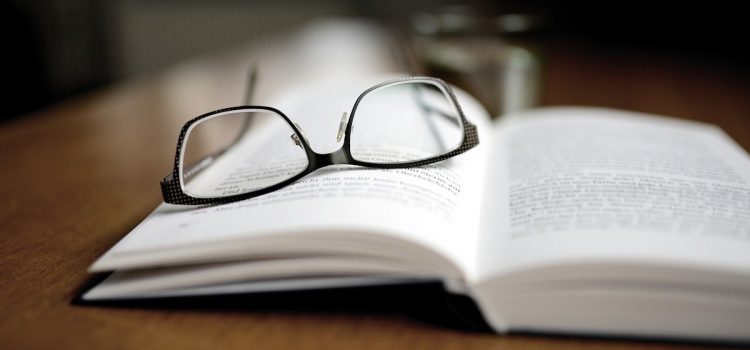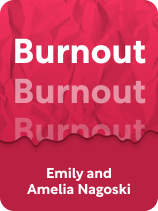

This article is an excerpt from the Shortform book guide to "Burnout" by Emily Nagoski and Amelia Nagoski. Shortform has the world's best summaries and analyses of books you should be reading.
Like this article? Sign up for a free trial here.
What is Burnout by Emily and Amelia Nagoski about? What are the main takeaways of the book?
In Burnout, Amelia and Emily Nagoski explain how women can handle stressors to avoid burnout. Their book exposes the patriarchal standards that cause female stress, explores how the body responds to this stress, and explains how you can handle stress before it leads to burnout.
Read below for a brief overview of Burnout by Emily and Amelia Nagoski.
Burnout Overview
Women have it rough. Our patriarchal society has a million expectations for how they should act, look, feel, and speak in any situation. And failure to meet these expectations equates to feeling like they aren’t “enough”—humble enough, generous enough, pretty enough, strong enough, and so on. The result? Physical, mental, and emotional burnout. Luckily, Burnout by Emily and Amelia Nagoski provides the science behind how women can handle these stressors to avoid burnout and thrive.
Amelia and Emily Nagoski are twin sisters who share a passion for wellness and helping women succeed. Amelia Nagoski is a Doctor of Musical Arts, conductor, former professor, and best-selling author. Emily Nagoski is a Doctor of Health Behavior who trains therapists, medical professionals, students, and many others on women’s well-being, healthy relationships, and the prevention of sexual violence and harassment. She’s also the best-selling author of Come As You Are.
Here we’ll teach you how to avoid burnout by revealing:
- The root cause of female burnout
- How to dissipate your stress and manage the stressors that cause burnout
- The techniques and tools that will help you recover from and build resilience against burnout
The Root of Female Burnout
The authors explain that burnout is the result of a stress overload that leaves you with feelings of inadequacy and futility—you’re exhausted, you stop caring, and you struggle to connect with others. The things that cause us stress are called stressors, and the first step to preventing burnout is to identify these stressors.
The authors elaborate that for women, most burnout-inducing stressors are the result of living in a patriarchal society in which boys are raised to be dominant takers and girls are raised to be submissive supporters. Supporters are expected to always be mild-mannered, humble, pretty, and willing to give their time, attention, affection, and bodies to the people who need them. This is a moral obligation that most women experience, and a standard that many men expect of women, but it’s completely unrealistic for any human to live up to.
How to Prevent Burnout
The authors explain that to prevent burnout, we must manage both our stressors and the stress they cause. Stress is the body’s hormonal response to perceived threats, and it helps keep us alive. For example, if you’re swimming and see a shark in the water (a stressor), you’re flooded with stress hormones, swim away fast, and feel relieved once you’ve escaped. However, if the shark disappears and your body doesn’t know whether you’ve escaped the threat, the stress will remain.
As we’ve learned, the stressors women face aren’t usually escapable—they tend to linger in our environment, like the shark. This means women’s stress lingers, builds up, and eventually causes burnout. The authors explain that to avoid this, you must (1) dissipate the lingering stress hormones, and (2) manage and minimize your stressors.
(Shortform note: Researchers agree that stress is a biological response to danger, elaborating that our body becomes stressed when something threatens its homeostasis. Homeostasis is a state of equilibrium among independent elements in our body, so we can classify anything that changes our body chemistry as a stressor—for example, things that alter our emotional state, energy level, and so on. Chronic stressors like those women face in the modern world prevent them from reaching homeostatic balance as their body chemistry is frequently disrupted. This can lead to several health problems, including high blood pressure and greater vulnerability to anxiety and depression.)
How to Recover From Burnout
In Burnout, Emily and Amelia Nagoski explain that no matter how good you are at managing your stress and stressors, you may still experience burnout from time to time. However, knowing how to recover from burnout will get you back on your feet faster and make you more resilient against burnout in the future.
The authors explain that four tools will help you recover from and build resilience against burnout: practicing self-compassion, finding a larger meaning in your life, forming a loving support system, and getting proper rest.
(Shortform note: Experts agree that learning how to recover from stress and burnout is one of the best ways to build resilience against stressors in the future. They add that this resilience will also give you a greater appreciation of life, your family, friends, and other matters you deal with. The authors recommend building resilience by practicing self-compassion, connecting to a larger meaning in life, spending time with your support system, and getting proper rest. Experts elaborate that creating a routine out of these recovery techniques is one of the most effective ways to boost resilience. For example, make it a habit to write compassionately to yourself in a journal every day.)

———End of Preview———
Like what you just read? Read the rest of the world's best book summary and analysis of Emily Nagoski and Amelia Nagoski's "Burnout" at Shortform.
Here's what you'll find in our full Burnout summary:
- Why women are more likely to suffer physical, mental, and emotional burnout in today's society
- How women can handle these stressors and thrive
- How to recover from burnout and get back on your feet






